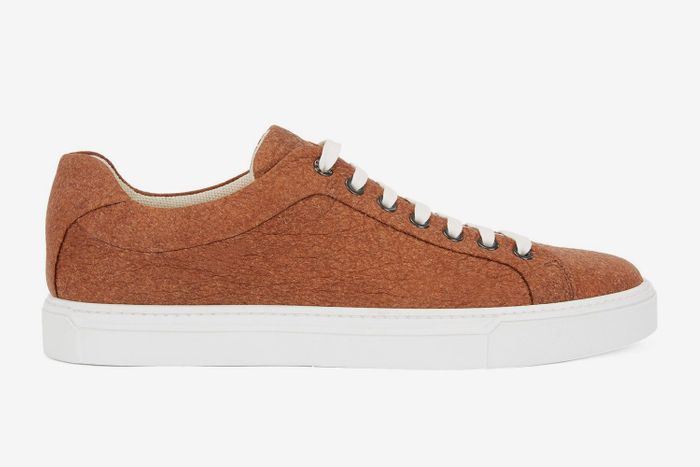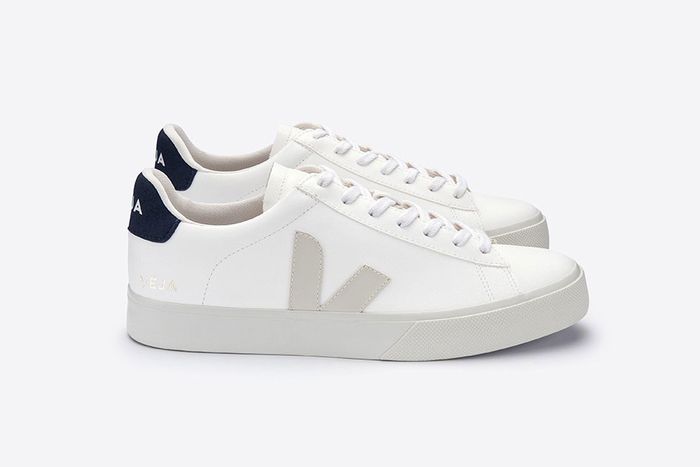
Brands are ditching fur like it’s a wedge-heeled sneaker. There’s a vegan fashion week in Los Angeles. Chanel even announced that it would no longer use exotic skins in its products. But although the fashion industry is (slowly) becoming more ethical, there’s no shortage of leather, even though it’s just as bad as fur — isn’t it?
Leather is a complicated ethical knot to untie. On the one hand, if you believe that animals shouldn’t be used for food or clothing, then the choice seems obvious: leather is out. On the other hand, leather is hard to avoid, and the most popular synthetic alternative, vegan leather, is essentially plastic.
Depending on who you ask, leather is either a by-product, co-product, or sub-product of the meat industry, which is bad for the planet. But Polyurethane leather is made from petroleum, which is also bad for the planet. They’re not the only two options, but they are the most common, and choosing between them pits questions of animal suffering against questions of sustainability. Below, we lay out the terms of the debate.
The Case Against Real Leather
For Christina Sewell, a representative for PETA, “fur is just leather with more fuzziness attached to it.” PETA’s protests against fur have slowly lead to an industry-wide rejection of the material. But Sewell believes leather is more embedded into most people’s daily lives, so people feel like they need it: “Everyone wears leather shoes, leather jackets. But when you’re thinking about a fur garment it’s something you’d think of your grandmother wearing.” That dissonance can account for part of why leather hasn’t come under the same amount of scrutiny as fur.
From an animal-rights advocacy perspective, it doesn’t matter how the animals are being raised or how leather is being tanned. Like fur, leather is simply something no one should buy or wear.
“We need to be addressing animal issues when we talk about sustainable fashion,” says Sewell. “[The topic] deserves a seat at the table just as much as the environmental aspects or the human impact does. When we’ve seen the ways that millions of animals are being abused and killed for clothing, there’s no way to unsee that.”
Even if you set aside the animal-rights issue, there’s an environmental downside to buying real leather: It has to be tanned, or processed until it becomes soft. Many tanners uses chromium, and in regions where leather production is popular but environmental-protection standards are not — like China, India, and Bangladesh — the chromium and other tanning chemicals often get dumped as liquid, sludge, or solid waste. That said, tanning doesn’t have to use harsh chemicals; vegetable tanning offers an eco-friendly alternative.
The Case Against Pleather
Many environmental activists argue that as long as there’s a meat industry, not having a leather industry would be wasteful. (Already, a drop in demand for leather has sent skins to the landfill.)
“It’s the question of Should we all become vegan? in a way,” activist and owner of Slow Factory Céline Semaan said. “If we say we’ll never use leather again, that generates so much waste. Cow leather is biodegradable. It doesn’t return to the Earth as poison. It is also a material that is extremely durable. Leather has longevity that plastic doesn’t.”
Semaan notes that not all leather is a byproduct of the meat industry and clarified that vegan leather that isn’t petroleum-based should become the norm. But as it stands, leather that is made as a byproduct of the meat industry and tanned with vegetables is a pretty environmentally friendly choice, especially if you use it over and over.
Is Fancy Lizard-Skin Leather Somehow Better?
Recently, a group of conservationists wrote an op-ed for Business of Fashion slamming Chanel’s decision to cut out exotic skins. They argued that the careful use of reptiles for skins can not only conserve environments, but also provide sustainable income for indigenous communities across the world. For the Tacana People in Bolivia, for example, the lizard-skin trade has led to better access to health care and food. (Writer and activist Alden Wicker has also written about this on her site, arguing that reptile leather and wild-caught deer leather are two of the more ethical options.)
These skins also don’t cause the drain on resources that cattle farming does. As a consumer it’s hard to trace exactly where exotic leather comes from, but as an industry in general, it’s more sustainable than cow leather. (This is also why transparency is so important for brands). If it’s real croc (not croc-embossed), it’s likely to be more ethical than many other alternatives.
The absolute ethical no-nos are calfskin and lambskin. The skin of calves and lambs are more valuable than their meat, which leads to people farming them almost solely for their skins. Many high-end brands own farms to secure their access to calf or lamb skins, especially since veal consumption has dropped as fewer people feel comfortable eating veal. For calves, the meat is the byproduct, not the skin.
Isn’t There a Way to Use Technology to Solve This?
Well, possibly. A few start-ups are racing to develop sustainable ethical alternatives Semaan calls them waste-to-fabric innovations and says, “If I were an investor I would put all my money into it, because waste as a resource is where we’re going to have to look. I mean, look at leather. It was the waste of one industry that became the resource of another.”
One alternative used by brands like Hugo Boss is done by a company called Piñatex, which turns unwanted pineapple leaves into a dark, leatherlike fabric. It’s not fully biodegradable, but is 85–90 percent biodegradable and turns an otherwise wasted byproduct of the agriculture industry into a fabric nonetheless (it’s coated with a petroleum-based resin, and the company says it is working on finding a bio-based coating).


Another recent waste-to-leather innovation has been championed by cult sneaker brand Veja, which has built a reputation on sustainability. For its new Campo shoe, the brand used a cotton canvas waxed with a corn waste-based lacquer that looks and feels almost identical to leather.
Possibly the most promising innovation, though, comes from a company called Modern Meadow, which creates lab-grown leather. Unlike other vegan leather facsimiles, Modern Meadow’s lab-grown leather has collagen, the protein that makes skin skin, so it looks, feels, and wears much closer to real leather. The company is still in research and development, but they’re working with some global brands to hopefully one day bring the product to market.
It’s a good idea, but the clock is ticking. By now, you may see how exasperating this question can get. It’s a value judgement in many ways. Which do you care about more? Sewell points to the Global Fashion Agenda’s Pulse of the Fashion Industry 2017 report that puts leather as the most wasteful fabric to produce, mostly because of the land use. That’s true. But the report only accounts for production, not the product’s end-life. PU leather will be around far longer than real leather, adding to accumulating waste.
Bottom Line: Is There Any Ethical Leather?
I’m not an ethicist or a religious leader; I can’t really consider myself qualified to advise anyone else on ethical problems. But having immersed myself in the research, here’s what I’ve concluded for myself: Vintage and upcycled leather is the most ethical option, but if I had to buy something new, I’d go with veggie-tanned cow, reptile, or wild-caught leather. Why? Because I think of the current options, it’s the one that I’ll use the longest and that seems be most durable. And ultimately, once I’m done with it, it will biodegrade. (Of course, vintage or upcycled leather is even better.) As with all ethical fashion, there is the issue of cost. Exotic skins can be more expensive, but fair-trade leather or vegetable-tanned leather is not always.
Leather has held on for so long because it’s a durable fabric and it can be a way of mitigating waste. I’m a vegetarian, but to me, where an item ends up is as if not more important than how it’s made. That’s my preference. But maybe you’re looking for another. If so, I’ve made a handy flow chart. Happy shopping.
This post has been updated to reflect Céline Semaan’s conviction that non-petroleum-based vegan leather should become the norm.






